Text
Update: again very sorry for all the delays, due to other projects i’m working on I will be adding to my 2,000 BC -0 AD research and upload when its ready, it’s more convenient for me at this point to do a big upload of 2,000 years at a time, history gets more dense as time goes on as we have better records of recent events however I will get us all to at least near 0 AD in the new year, thanks for you patience guys and girls
5 notes
·
View notes
Text
Just a message to everyone that follows this blog i’m just currently trying to wrap my head around Mesoamerican mythology, the blog will resume posting once I have the information accurate and recorded.
3 notes
·
View notes
Text
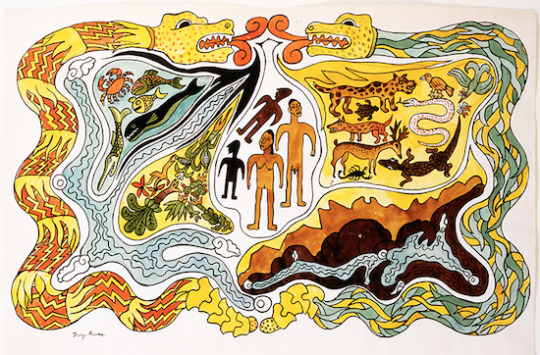
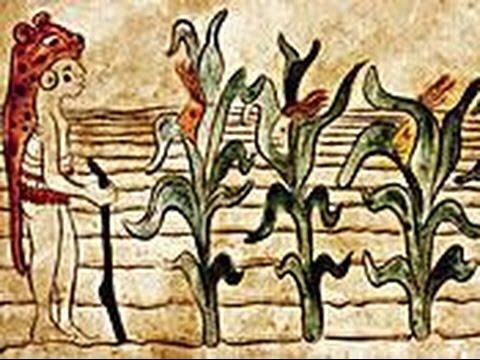
The Mayan creation myth is translated from their ancient writtings in a text called the “Popul Vuh” which describes their cosmology which can be sumerised as follows:
The world was without life only the sky and sea existed but both were empty. The text goes on to say there were “makers in the sea, together called the plumed serpent” (“plumed/feathered serpent” refers to the God Quetzalcoatl) and that there were “makers in the sky, together called the “Heart of Sky” and that these forces, Quetzalcoatl and Heart of Sky planned to create life, between them they raised the land up from below the oceans creating mountains to separate the land, sea and sky, The Heart of Sky made animals; mammals and reptiles and then birds, the heart of sky asked the animals to pray to them but the animals could not talk and so were designated as food to eat. Attempting to make more intelligent life the makers then made a body of mud which talked but looked grotesque and crumbled away in the rain. Because they could not create the beings they desired the Heart of Sky called on the wise ones or diviners the grandfather God Xpiyacoc and grandmother Goddess Xmucane who suggest making and animating wooden carvings instead. These wooden people could talk and multiply but their minds and hearts were empty and they do not revere/serve the Heart of Sky and thus the Heart of Sky devised a flood and killed them all in rain that lasted many days and nights, the animals came into the wooden peoples homes and ate them and the text goes on to state that the wooden peoples resembled monkeys suggesting that they were primitive men. Following this the Heart of Sky and Quetzalcoatl make eight human beings (four male and four female) out of yellow and white corn or maize which formed the modern humans who could talk, multiply and worshiped the Gods thus the Maize plant became sacred to the Mayans as a sign of the ancestor and united them in their new agricultural society focused around growing maize instead of being just a tribal hunter gatherer structure. The Heart of Sky and Quetzalcoatl are pleased with their creation however they are disturbed by mankinds spiritual spark or “perfect sight” and they choose to then cloud the vision of man to keep mankind subservient.
While it is known that the Mesoamerican cultures may have had contact with the Egyptians in later history (evidenced by mummies burried with cocaine) it is rather disturbing to draw the parallels between the Mayan cosmology and those from other cultures who supposedly had no contact with one another. For instance just as the Sumerian myths state that the Earth and sky were formed by the Gods out of the great sea of Tiamat and seperated by the mountains so too do the Mesoamerican, Egyptian and Semitic myths concour with their own version and just like the Anunnaki had filled a barren world with crops and animals so too did the Heart of Sky and Quetzalcoatl. The creation of mankind out of clay or mud parallels the Semitic golems and stories of Adam and Eve, the Egyptian clay forms of Khnum and also the Sumerian myth of the Anunnaki making beings from clay wombs as well as their first failed creation - the Igigi. Once again there is a great flood myth sent by the Gods to destroy the failed creation with exact parallels to the Sumerian and Semitic flood myths and also the failed and rebellious creation of wooden people could represent the blackheads/dark race or the igigi. Finally like the myths of God in the Hebrew Bible who confounds mans language and prevents man from achieving immortality and like the sumerian anunnaki who seek to make human slaves, the Mesoamerican Gods are disturbed by the “perfect sight” of their creation - their own divine essence, and so seek to “put fog into the eyes of man” clouding their vision and keeping them enslaved.
9 notes
·
View notes
Text

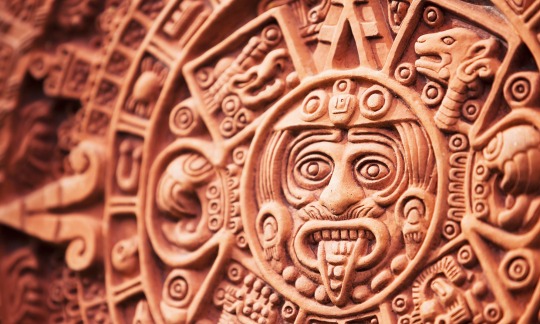
Around the same time as the early Canaanite and other Semitic cultures developed in the middle East in and around 2000 BC the early Mesoamerican Mayan civilisation was also developing in South America.
1 note
·
View note
Text
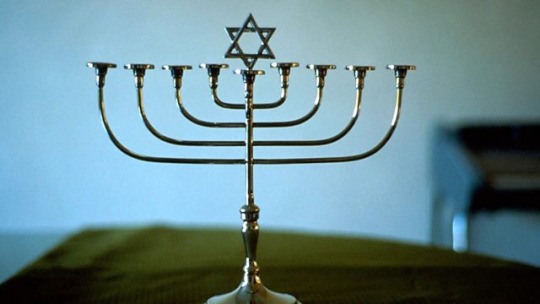
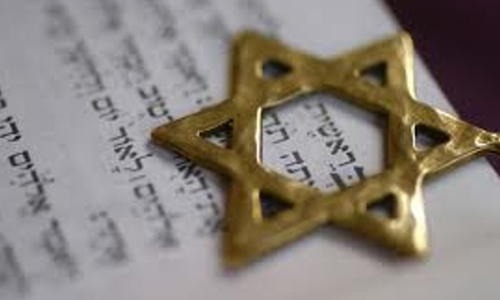
-The rites, rituals and beliefs of these early Semitic peoples would come to evolve and form the basis for the monothestic Jewish faith founded when Abraham was prevented from sacrificing his own son Isaac. The Jewish faith is steeped in the culture of Jewish people and centers around the Torah, Talmud and other early Aramaic and Hebrew texts drawn from earlier Semitic paganism. Judaism is a religion which believes that the Jewish people have entered into a covenant with God and will ultimately come to inherit the Earth when the Jewish people return to Zion/Israel, build the third temple in Jerusalem and return the Ark of the Covenant to the temple, this belief has in turn generated the more severe and elitist belief among some Jewish people of Zionism which will be discussed further in the 20th and 21st century AD. The Jewish people founded the nation of Israel from their prophet Moses’s exodus from Egypt along with the early Israelites, they took aspects of Egyptian culture with them such as jewellery making and the Egyptian Kabbalah which they used to make their own. Throughout history the Semitic people are variously held as slaves by the different nations of the world and it is from this persecution that the belief they will in turn inheret the world is drawn. Freemasonry has many sublime connections to the Jewish faith and Zionism which will also be discussed in future posts.
2 notes
·
View notes
Text
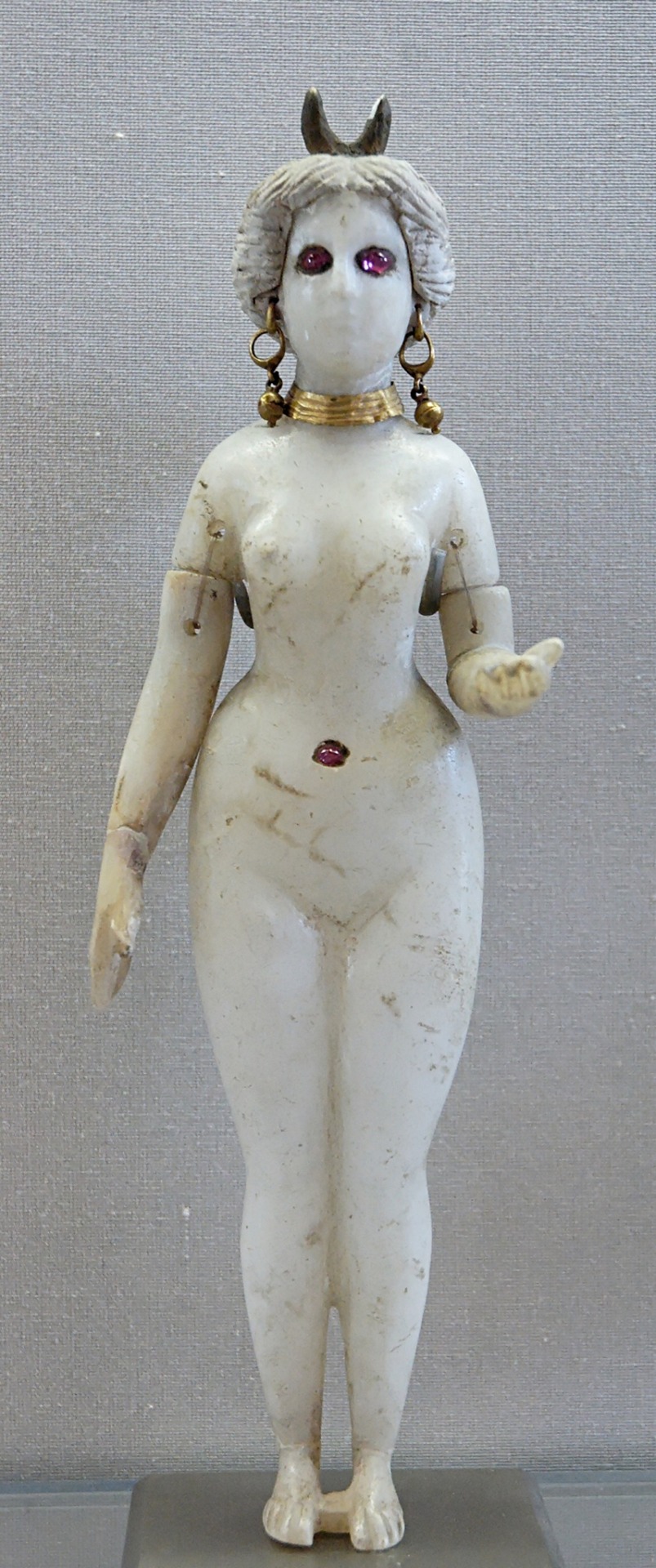
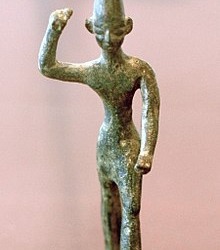
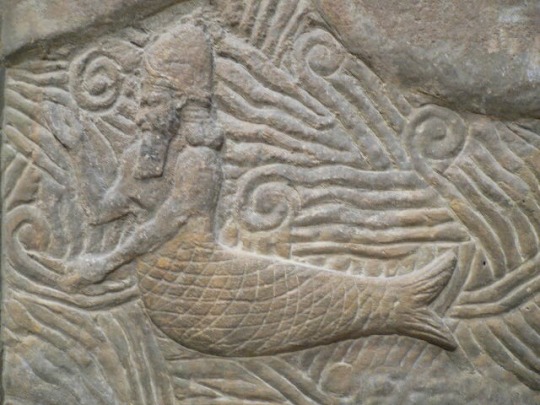
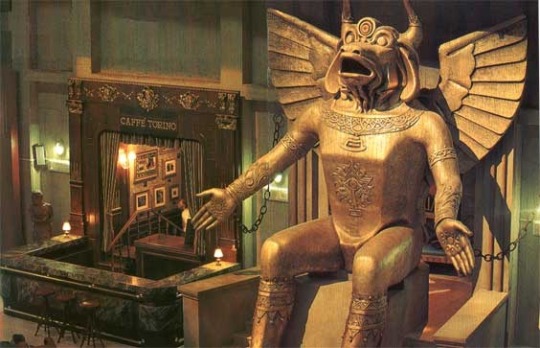
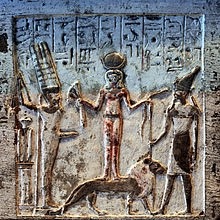
The early Semites and Canaanites had a number of Gods before eventually bringing the number down to two (Asherah and El) until finally settling into the monothestic Judaic religion. The old Canaanite and Semitic deities are as follows:
Adonai: Meaning “Lord”, Adonai is a name for God still used today.
Aglibol: Aglibol is a luna deity depicted with a moon halo decorating his head and sometimes his shoulders, one of his attributes is the crescent moon. Aglibol means “Calf of the Lord”.
Amurru: Amurru was an early storm and mountain God known to be based on the Mesopotamian Adad. Amurru’s consort was Asherah and he likely came to inspire both Ba’al and El who were also inspired by Enlil and Enki of the Mesopotamian mythologies.
Anat: Anat was a war Goddess, a virgin - likely meaning Hierodule as proven by the fact that she is also the consort and lover of her brother Ba’al Hadad. Anat appears as a fierce, wild and ferocious warrior in battle said to wade knee-deep in blood, striking off heads, cutting hands, binding the heads to her breast and the hands in her sash, driving out the old men and townsfolk with her arrows with her heart filled with joy. Anat is the mother of Aglibol. Anat in one myth slays the God of death, Mot to release Ba’al Hadad from the underworld, she also seems to parallel Ishtar slightly in a myth where she seeks to take vengeance against the hero Aqhat for refusing to part with his marvellous bow.
Asherah: Asherah is a Semitic version of the Sumerian Goddess Ishtar. Asherah is the consort of El with whom through Hieros Gamos she is said to have birthed the cosmos. Asherah was worshiped by early Hebrews up until their Exodus from Egypt when Yahweh alone became the monotheistic God of the Israelites.
Ashima: Ashima is a Goddess of fate and the working of destiny, she was still worshiped by the Samaritans long after the Hebrew people stopped worshiping her.
Astarte: Astarte (Depicted top left) was a Goddess of fertility, sex and war she was associated with Venus and thus likely modeled on the Sumerian Goddess Ishtar and came to later influence the Semitic demoness Lilith. In one myth Astarte is sent by the primordial God of heaven with her two sisters Asherah and Ba’alat Gebal to trick the God El however all three end up becoming consorts of El. In much later demonology Astarte is made into a masculine demon king called Asteroth.
Athirat: An ocean Goddess and varient of Asherah.
Attar: A Semitic male version of Ishtar and a war God representing the morning star, Venus. Attar often attempts to overthrow the God El and so may have been an early Semitic version of Lucifer/Satan - who also bares the epitaph “morning star”. Attar was a fertility God with power to cause rain. This male “morning star” may have lead to the development of Samael as the male veriant of Lilith.
Ba’al: Ba’al (depicted top row and central) means “Lord” however the title also refered to as specific deity. Ba’al was a God of the heavens, of storms and fertility. In the Bible when it says “the Lord said” this is likely a translation from the original “Ba’al said”, in later demonology Ba’al would be demonised as both the demon king Ba’al and Beelzebub or more accurately “Ba’al Ze Bub” meaning “Lord of flies”.
Ba’alat Gebal: Was one of three sister Goddesses including Asherah and Astarte sent to trick El but ended up being his consort instead.
Ba’al Hadad: Ba’al Hadad is the Semitic version of the Sumerian God Adad. Ba’al Hadad was a storm and fertility God that brough rain he also fought and killed the God of the sea, Yam who Yahweh had set up to take the throne of heaven, after which Ba’al Hadad was himself vanquished by the death God Mot and resurrected by Mot’s own death when he was slain by the warrior Goddess Anat who killed Mot in order to release Ba’al Hadad. Ba’al Hadad seems to be the chief of Gods in Canaanite mythology and has three consorts: Ba’alat Gebal, Asherah and Astarte.
Ba’al Hammon: Ba’al Hammon was a weather and vegetation God of fertility, he was often depicted with horns and was the husband of the Goddess Tanit. Ba’al Hammon was likely demonised as the demon “Mammon” which rules over materialism and is closely associated with another Canaanite God-turned-demon; Moloch.
Ba’al Shamin: Ba’al Shamin is thought to be a solar deity or a heaven deity and is often depicted in a trinity with the moon God Aglibol and the sun God Malakbel. Ba’al Shamin was originally used as a title and of Ba’al Hadad although later he seems to become a God in his own right.
Ba’al Zephon: The God Ba’al in his role as lord of Mount Zephon - the Canannite home of the Gods.
Chemosh: Chemosh was the head God of the Moabites in their tradition he was often appeased by human sacrifice by fire, Chemosh in the Moabite cosmology is paired with Astarte in the form of Ashtar and the two in sacred marriage symbolism are paired as one androdgynous being known as Ashtar-Chemosh.
Dagan: The Mesopotamian deity Dagon (depicted top right) was worshiped by early Semites under the name “Dagan” his mythology remains the same however his interactions with Sumerian deities are replaced by their Semitic counterparts.
El: El meaning “God” became identical with Yahweh and eventually became the monotheistic God of the Hebrew Bible however he is clearly modeled on the Sumerian Gods Enlil and Enki. El was the chief deity of the early Semitic pantheon. El was a storm and mountain God as well as the creator God of Heaven, he is nearly identical with all forms of Ba’al. El was the father of the other Gods in a sacred marriage with Asherah, these other deities became the “Elohim” - “Children of El” which was later translated in the Bible as “Sons of God” and came to mean angels. El was originally the husband of three Goddesses; Ba’alat Gebal, Asherah and Astarte. In Canaanite combat myths it is El that vanquishes the great primordial beasts; Behemoth, Ziz and Leviathan in order to create the universe from their corpses showing a reference back to the Sumerian myth of Marduk and Tiamat.
El Elyon: A title of El meaning “God of the most high”.
Eshmun: Eshmun was a mortal man who was harassed by the Goddess Astarte and so cut off his own genitals in ritual castration and died he was then resurrected and made a God of healing. Since the cause of his castration is a Goddess and castration often implies sacred union this myth is clearly a Hieros Gamos mythology since it also follows the pattern of death followed by resurrection and ascent into Godhood.
Gapn: Gapn was a messanger of Ba’al and was a God of vines and wine.
Horon: Horon was a God of destruction and chaos.
Ishat: Ishat was a Goddess of fire slain by Anat.
Itum: Itum was a Goddess and consort of the God Resep.
Jehovah Sabaoth: Meaning “Lord of Hosts” or “Lord of Armies/Powers”. “Jehova” is regarded as a pronounciation of “Yahweh” and so the two deities are practically identical with Jehova being seen as Yahweh in battle or as an aspect of Yahweh with a focus on war.
Kades: A mother Goddess of fertility often described as the fertility aspect of Astarte.
Kothar: The God of metallurgy and blacksmithing he was known to have created a marvellous bow for the hero Aqhat and two magic maces or clubs for Ba’al/El. Kothar was also an architect, carpenter and magician and was known to build the palaces of the other Gods, create spells and enchantments and bless deities with gifts of silver or gold furniture. Early Semitic builder cults probably venerated Kothar.
Kotharat: The Kotharat, meaning “skillful ones” were a group of seven moon Goddesses associated with swallows, they were divind midwives who helped women in childbirth and they themselves are seen as Hierodules/sacred prostitutes almost certainly having a connection to Hieros Gamos rites. The Kotharat were sometimes refered to as “Sasurartum”.
Malakbel: Malakbel was a solar deity often shown in trinity with Ba’al Shamin and the luna God Agibol. Malakbel was seen as a messanger of Ba’al - a term which is believed to have been rendered “angel of the Lord” in later Biblical interpretations.
Marqod: Also known as Ba’al Marqod meaning “Lord of the dance” was a God of healing and dancing as the two are thought to be linked and probably relating to ritual dancing. Interestingly the term Lord of the dance later became synonymous with Jesus Christ because of a Christian hymn which gives him the title.
Moloch: Moloch (modern recreation depicted lower left) was a Canaanite God. Moloch comes from the Canaanite “Mlk” meaning “King” and is often ascribed to various male deities in the Canaanite pantheon however Moloch is also a demonic deity depicted with a bulls head and horns and outstretched arms. There is a strong belief that the Canaanites would sacrifice their own children to be burned alive in the arms of a statue of Moloch to the beat of ritual drums this was considered a powerful sacrifice that would win the favour of the Gods since they had given something precious to themselves rather than property such as livestock or captured enemies, the sacrifice was known as a “burnt offering to God/Moloch” and is rendered in the Bible as the Biblical term “Holocaust” which has the same meaning. In modern demonology Moloch is often described as a demon.
Mot: Mot is the deification of death said to have dwelled on a throne in a low pit, in on myth he is invited to a feast by Ba’al Hadad who wishes Mot to submit to him, in this same myth Mot is refered to as “divine death” and so he may be a special kind of death God which only kills other Gods. In response to Ba’al Hadad’s request Mot claims his hunger is relentless and threatens to eat Ba’al Hadad himself, which according to the myth he achieved before being slain himself by the war Goddess Anat who cuts Mot into pieces in order to free and thus resurrect Ba’al Hadad. The reference to the hunger of Mot may influence later Semitic and Biblical depictions of death as a force that eats or swallows.
Nikkal: Nikkal was a Goddess of orchards and fruit and was known as “great lady and fruitful”, she is therefore also a fertility and vegetation Goddess thought to be based on the Mesopotamian Goddess Ningal.
Onca: Onca was a Canaanite Goddess of wisdom closely associated with the later Greek Goddess Athena.
Pidray: Pidray is one of the daughters of Ba’al and a Goddess of light and mists.
Qetesh: Qetesh (bottom right) was an aspect of Asherah described as a fertility Goddess and a Goddess of sacred prostitution linked with sacred marriage rites. Qetesh was also worshiped in Egypt where she was depicted as a forward-facing naked woman on top of a lion with a Uraeus and sun-disc on her head, often depicted holding a snake and lotus flowers she may therefore be related to Kundalini/serpent energy mysteries. Qetesh is the first known tripple Goddess in one form known as Qudshu-Astarte-Anat (wherein “Qudshu” is taken to mean Qetesh) from this it may be taken that Qetesh is synonymous with Asherah and Anat may also relate to Ba’alat Gebal since Asherah-Astarte-Ba’alat Gebal are also a set of Canaanite Goddesses who are mentioned in triplicate as the consorts of El.
Rabbim: Rabbim was a God of floods killed by the war Goddess, Anat in some myths but is more commonly said to have been slain by El/Yahweh or Ba’al. Rabbim may therefore be identical to the sea monster Rahab.
Resep: Resep is a God of illness and a deification of plagues, in some texts he is an attendant of Yahweh.
Resheph: A horned archer God whose name means “lord of the arrow”, Resheph was known as a war deity associated with protection from plague, the God Resep may therefote be a later corruption of Resheph. Resheph likely relates to the Sumerian God Pabilsag since Pabilsag is described as a horned bull synonymous with the archer of the Zodiac; Sagittarius.
Sapas: Sapas was a solar Goddess, a messanger of El and a healer, she was also known to lead souls through the underworld acting as a psychopomp just as the sun is seen to descend into the underworld at sunset. Sapas is also described as all seeing and called by the title “torch of the Gods”, this may have influenced later Semitic and Biblical omnipotent sun Gods and the Masonic symbol of light or “all seeing eye”/“eye of providence”.
Shahar: Shahar was the God of dawn and was brother of Shalim, he was born of the union of El and Asherah. The concept of the sun having different personifications depending on its position in the sky is likely influenced by Sumerian and Egyptian cultures.
Shalim: Shalim was the God of dusk and brother of Shahar, like Shahar he was born of the union of El and Asherah.
Sydyk: Sydyk was a Goddess of justice and judgement and was connected to the planet Jupiter, she was probably based on Roman mythology as she appears much later than other Phoenician deities.
Tanit: A mother Goddess likely based on Astarte, she was a consort of Ba’al Hammon and a Goddess of war, fertility, virgins (Hierodules) and nurses. There is some archeological evidence and written historical evidence to suggest that the worship of Ba’al Hammon and Tanit may have resulted in the sacrificing of children, this in turn may relate the two deities to Moloch and may be the cause of the demonisation of Ba’al Hammon into Mammon.
Yahweh: Yahweh was a divine warrior God of storms, war, mountains and the heavens. The name Yahweh likely started out as a title of Ba’al and/or El before becoming a God in his own right and ultimately becoming one with both these figures as the monothestic God of Judaism and the Hebrew Bible which likely relates back to the volcanic mount Sanai in later Hebrew mythology. Yahweh developed as the God of Israel and Judah and was the husband of Asherah before she too was mostly removed from the newly formed Jewish religion being refered to as titles such as “Shekhina” meaning “Holy Spirit” or “Bride of God”.
Yam: In the original combat myths of the Canaanites Yam is an ocean God thought to be modeled on the Sumerian God Anzu or Goddess Tiamat or perhaps even Kingu. Yam is sent by his father El to attempt to usurp the throne of heaven and succeeded making himself the master of the Gods and working them as slaves, the Gods in turn pray to their mother Asherah who goes before Yam and offers her body (sacred prostitution) in exchange for releasing the other Gods which Yam then accepts. Asherah goes back and relates this deal to the other Gods and Ba’al Hadad in rage protests and insights a war against Yam finally slaying him with the twin maces forged for him by the smith God Kothar. Slaying Yam in turn made Ba’al Hadad king of the other Gods. This mythology is clearly based on the uprising of the Gods behind Marduk in battle against Anzu, Tiamat and Kingu.
Yarikh: A moon God and husband of Nikkal, his dew was seen to make Nikkals flowers flourish and he was known as the “illuminator of the heavens” and “lord of the sickle”. It is unknown if this God relates to alchemical “Heavenly Dew”.
#post142#mysticism#religion#mythology#hierosgamos#sacredmarriage#goddess#god#canaanites#semitic#kundalini#holocaust#israel#demonology#masonry#sacrifice#lilith
42 notes
·
View notes
Text
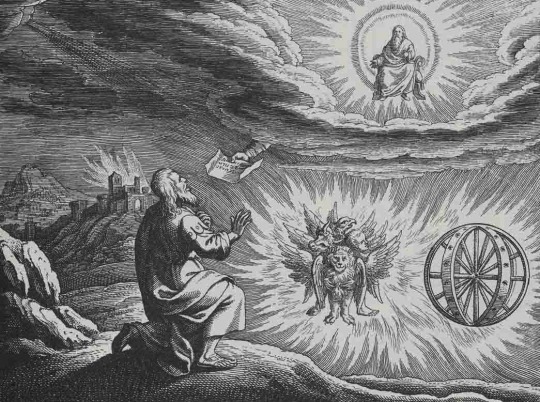
-A scene depicting God giving Ezekiel the scroll of lamentations from within the Merkaba while preceeded by a four-faced Cherubim and an Ophanim “wheels within wheels”
17 notes
·
View notes
Text
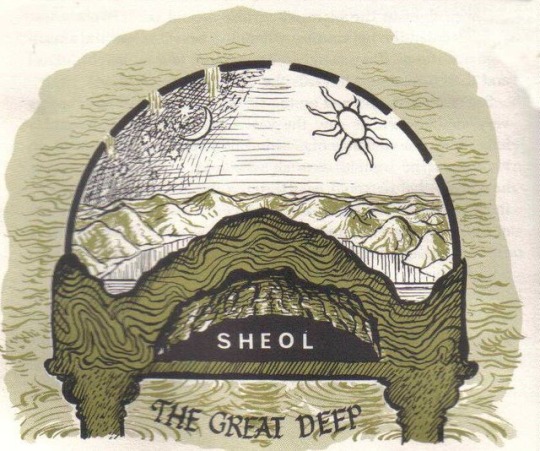
The Canaanites had little to no recorded belief in an afterlife however the later Hebrew peoples came to believe in “Sheol” a dark underworld or pit where the dead sleep awaiting resurrection on judgement day. There also seems to be little to no evidence of a Semitic end times myth until much later when Judaism develops into Christianity.
5 notes
·
View notes
Text
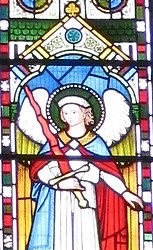
A few interesting mythological weapons are mentioned in the Semitic mythologies, they are as follows:
Ayamur and Yagrush: The enchanted twin maces of the God Ba’al made by the smith God Kothar, they may be related to the earlier Sumerian Sharur.
Bone of Behemoth: The only weapon capable of harming the beast behemoth was its own bone.
Flamming Sword: The swords used by angels made completely of fire (as depicted above) one such sword with two edges that turned constantly was placed as a sentinel at the gates of Eden to prevent mankind re-entering paradise after the exile of Adam and Eve, in some mythologies it is equated with Samael and Lilith and it may relate Kabbalistically to the Hebrew letter Zayin which means sword and is associated with the star sign Gemini. Some angels are described as being swords such as Samael who is the sword of the demon king Asmodeus.
Marvellous Bow: The bow crafted for Aqhat by the smith God Kothar it was sought by the war Goddess Anat who sent a soldier to kill Aqhat for it after he refused immortality in exchange for the bow. The God El returned Aqhat to life and gave his bow back to him.
Matteh: Also known as the “Brazen Staff” it was related to snakes and used by the prophets Moses and Aaron. Since the staff can be taken to represent the spine and brazen relates to energy this may be a Semitic Kundalini mystery. The Matteh may relate to other magic wands and rods associated with snakes such as the later Greek wand of Asclepius or the Caduceus.
3 notes
·
View notes
Text
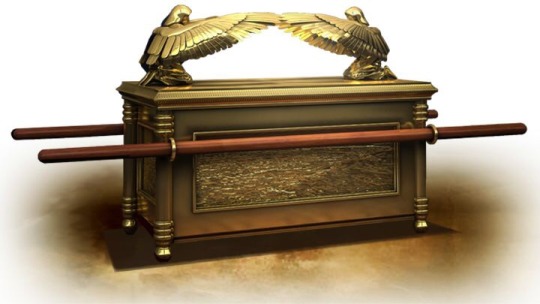

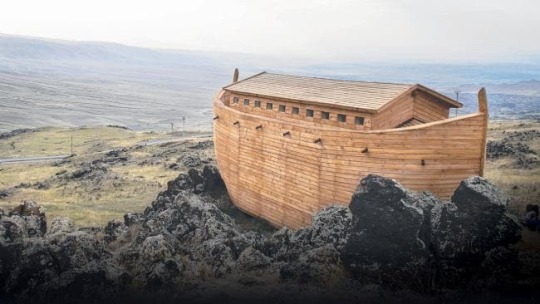
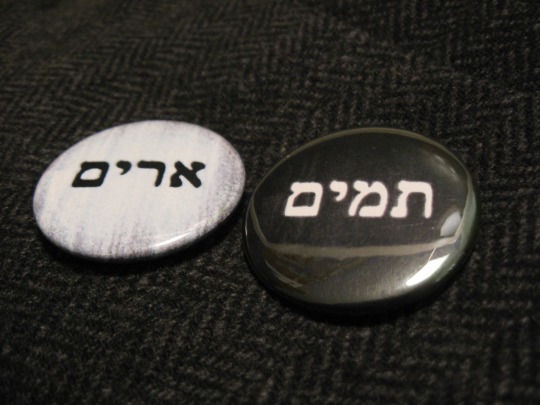
A number of interesting mythological objects are mentioned in the Semitic mythologies they are as follows:
Adamah: Also called “Hayula” in the Arabian tradition. Adamah was the dust or clay of creation used to make living things and was the namesake of Adam who is made from this mysterious red clay. Adamah likely relates to the golem mythology and interestingly in some mythologies vampires are said to revert to Adamah dust once slain.
Ark of the Covenant: A great chest (depicted left) made with ornate carvings of cherubim although since this artefact was likely pillages from Egypt during the events leading up to Exodus these characters are likely to be Isis and Nephthys. The Ark housed the Shekinah (holy spirit or bride of God), the ten commandments, a pot of manna and the Matteh of Moses. The Ark was said to allow communication between humanity and the divine it was last historically sited to have been lost in the English area of sea known as the wash during an attempt to move it out of the country that ended with a sunken boat.
Book of Life: A book kept by the angels of God that had a list of everyone ever borns name in it, in later Christian mythology having ones name written in the book conveyed immortality while having ones name erased from it caused death. There has been speculation to suggest this book may actually represent DNA and genetic encoding.
Brass Vessel: One myth relating to King Solomon states that he evoked and bound seventy-two demons into a brass vessel which he then had thrown into the red sea, the local people thought it was valuable gold and fished it out, opened it and released the demonic forces who quickly fled except Belial who stayed and demanded to be worshiped. This mythology had later impact on rituals involving brass vessels to capture and contain demons, the Arabic mythologies of genies bound to brass vessels and probably even the ancient Greek story of Pandoras box.
Crown of Immortality: A crown given to those who achieve ascension making them immortal and God-like. This likely relates to the Kabbalistic Sephira of Kether which means “Crown” and relates to union with God/the divine.
Hide of Leviathan: The hide of the great sea serpent Leviathan said to be the most impenetrable armour.
Holy Anointing Oils: These oils were used in the Tabernacle and then later in the temples of Jerusalem, a person or object coated in these oils became holy, this may relate to the term “Christ” which means “Anointed in the oils of flowers” and also the term “Messiah” meaning “Anointed One”. Originally only priests could use the oils but later kings were also permitted to use it. The oil was created from pure myrrh, cinnamon, cassia, olive oil and kaneh bosem. Kaneh Bosem was a fragrant cane plant most likely to be cannabis (depicted top row and central) which was known to be used by the Egyptians in rituals and was thus likely known to Moses there is also the fact that the plant in later history is refered to as “Cannabos”.
Horn of Gabriel: The horn of the angel Gabriel blown to signify judgement day when God returns to earth to resurrect the dead and pass final judgement on their souls.
Magen David: A shield in the shape of a six-pointed star used by King David which later became the seal of Solomon (Davids son) it is used by Jews today as a symbol of their faith and also is a 2D depiction of the Merkaba.
Noah’s Ark: The ark created by Noah (depicted top right) to save his family, seeds and two of each animal from the great flood by the commandment of God. This is almost certainly based on the preserver of life from Sumerian mythology.
Ring of Solomon: A silver ring inscribed with the names of angels used to summon and control demonic spirits, it was also held to the nose to prevent the inhaling of “astral poisons” which cause insanity and a weakness of the life force.
Ten Commandments: Stone tablets carved by Moses to take down the laws of God during a communion with God on mount Sinai. The ten commandments are likely based on the Egyptian forty-two laws of Ma’at and are actually the second set of tablets created by Moses for this purpose as he shattered the first set in anger when he saw the Israelites idol worshiping the golden calf.
Tzohar: A gemstone said to contain the light of creation, its name is likely related to the great Kabbalistic texts known as the “Zohar”.
Urim and Thummim: Meaning “perfect lights” were gemstones (modern veriant depicted bottom) worn by the high priest/priestess as a breastplate said to have been carved by Moses using a shamir. This breastplate was used for direct communion with God in later history they seemed to inexplicably lose power and were instead used for divination.
10 notes
·
View notes
Text
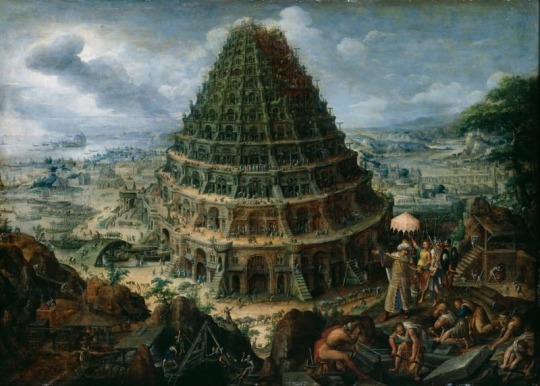
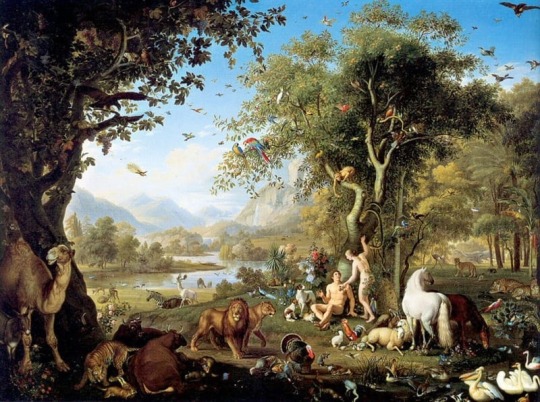
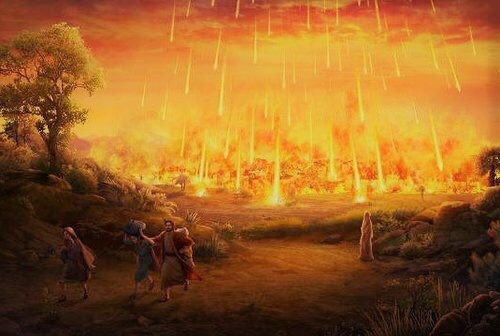
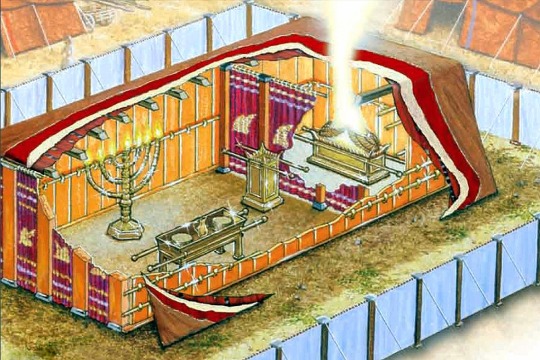
There are a number of places depicted in the Semitic mythologies some of the more interesting are as follows:
Babel: The tower of Babel (depicted top left) was constructed by the workers of the Babylonian king Nimrod to reach the heavens however its construction ceased when God cursed the workforce to speak differing languages causing them to spread across the world.
Eden: The garden of Eden (depicted top row and central) was a paradise created by God for all his animals and plants and for Adam and Eve to dwell in they were banished after disobeying God and eating the fruit of knowledge/death the serpent had tempted them to eat. The garden of Eden is likely based on the Mesopotamian “Edin” or “Edom”.
Gomorrah: One of the two cities that was destroyed by angels in a rain of sulphur on Gods command for being over run with sin (depicted top right). The destruction of these cities is sometimes equated with an atomic flash since Lot’s wife was turned to a pillar of salt/vapourised from looking back at the destruction.
Mount Moriah: The mountain where Abraham took Isaac to be sacrificed to God.
Mount Zaphon: Believed by the Canaanites to be the home of the Gods.
Nod: The land Cain was said to go to after his exile however the Hebrew word “Nod” means “to wander” likely meaning Cain lead a nomadic lifestyle.
Sea of Glass: The area before the throne of God with angels stood upon it singing hymns.
Sodom: One of the two cities that was destroyed by angels in a rain of sulphur on Gods command for being over run with sin (depicted top right). The destruction of these cities is sometimes equated with an atomic flash since Lot’s wife was turned to a pillar of salt/vapourised from looking back at the destruction. The people of Sodom were known to be sodomites and rapists.
Tabernacle: The holy tent that housed the Ark of the Covenant (depicted bottom) it was also said to be the dwelling place of the Shekinah (bride of God). The Tabernacle is often associated with the Hebrew Kabbalah since the upper pathways of the Tree of Life contain Hebrew letters whose symbolic meanings relate to the diferent parts of a tent.
Targhizizi and Tharumagi: The twin mountains said to hold up the heavens and the earth and as an entrance to the underworld they likely related back to the Sumerian twin peaks of Mashu.
Throne of God: Relating to the Sephira of Binah on the Kabbalistic Tree of Life. The throne of God is a place where the light of God takes its position on high surrounded by the four tetramorphs who sing Gods praises it is also a reference to the vision of Ezekiel and Merkaba mysticism. Interestingly in Kabbalistic texts the fallen angel Lucifer is described as the “cherubim before the throne of God” who shrouds God in his wings this may explain why it appears light is seated on the throne since “Lucifer” means “light-bringer”.
Well of Souls: The “Dome of the Rock” and Al Aqsa temple are consudered important to the three Abrahamic faiths (Judaism, Christianity and Islam) because it is believed to be mount Moriah where Abraham would have sacrificed Isaac and instead founded Judaism the father faith of later Christianity and Islam. Prophecy states that the three faiths will come together in peace at this site in Jerusalem and the well of souls is a pit beneath the temple where according to legend the souls of the dead await their resurrection on judgement day and can be heard wailing.
Zion: Zion is a prophecised land that will come in the middle East stretching from the Euphrates to the Nile and the modern Israeli flag bares two blue lines representing these rivers and the magen david representing the state of Zion between them. Zion is prophesised by Ezekiel to come when the third temple is built in Jerusalem and the Ark of the Covenant is returned to the temple.
3 notes
·
View notes
Text
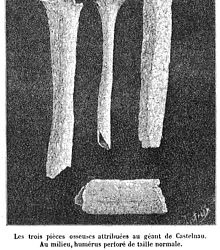
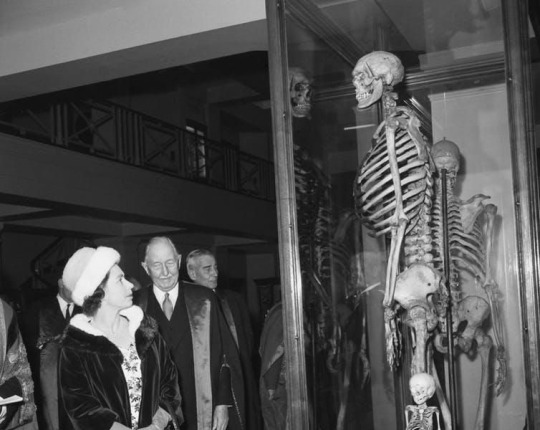
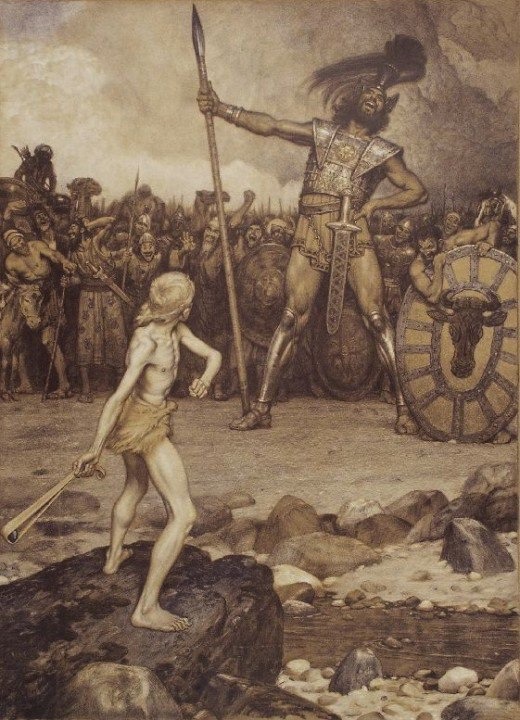
-While it may seem fantastical that giants roamed the earth mythology from around the world is full of them and archeological remains have been found such as the giant of Castelnau whos leg bone is depicted left with a normal sized leg bone shown in the centre of the image for comparison estimated to make the giant eleven feet and six inches tall while in 1894 a prehistoric cemetry dug up in Montpellier, France unearthed skulls between twenty-eight and thiry-two inches in circumference which were then sent to the Paris Academy for study and in 1911 the remains of the red haired cannibalistic Native American tribe of the Si-Te-Cah or Sai’i were discovered by guano miners in Nevada’s lovelock cave, many of these remains were gigantic in size. Some claims in modern history suggest that giant skeletons were found in the middle East during the Iraq war and were subsequently destroyed or shipped off for secret analysis however these stories were often accompanied by images that were clearly doctored on photo-editing tools. It is also possible that gigantic humanoids may have been surviving Gigantopithecus- a species of gigantic apes who survived at least until 100,000 years ago alongside stone age humans and whose fossil records are largely incomplete.
13 notes
·
View notes
Text
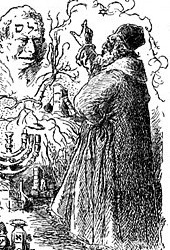
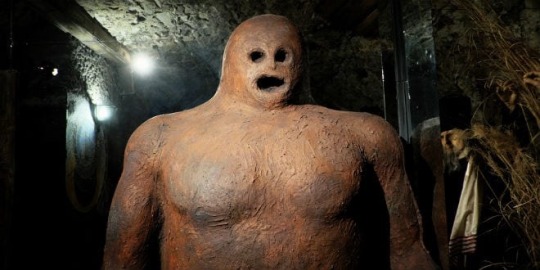
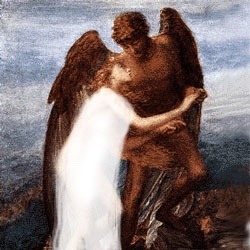
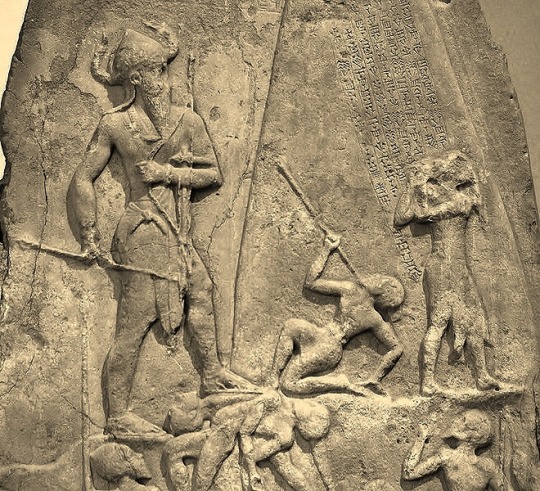
In Semitic mythology a number of monsters exist they are as follows:
Elioud: Children of the Nephilim they are part angel though the percentage varies.
Golem: The Golem is a creature formed from clay by Kabbalistic magicians it is commanded to life by incantations and on its head is written the Hebrew word “Emeth” meaning “Live” when the Golem is no longer useful the letter “E” is removed so that it spells “Meth” meaning “Death” and causing the golem to become inanimate. A golem is a slave being taking orders from written scrolls placed in its mouth they are usually guardians and can get out of control if left to live long enough to begin developing freewill and sentience of their own. A famous example is the supposed golem of Prague. To create a golem is a sign of true holiness as it mimics the creation of Adam by God from Adamah clay.
Lotan: A great sea serpent or monster and servant of the ocean God Yam he was slain by Ba’al in early Canaanite combat mythologies. Lotan was probably the inspiration for Leviathan and other sea serpents and is likely a Semitic version of the Sumerian Tiamat.
Nephilim: The “men of renown” and “mighty men of old” often taken to mean giants, the Nephilim were the offspring of the fallen angels and daughters of man. In Genesis this union causes the flood of the world when God attempts to purge the abominations from the world. The word “Nephilim” actually means “those who were cast down” and refers to fallen angels.
Rahab: An angel of the deep described as a great dragon or sea monster it likely influence Leviathan and was itself influenced by the Sumerian Tiamat.
Rephaim: Similar to Nephilim, the Rephaim were giants born of the union of women and fallen angels. In later mythology the Rephaim would be synonymous with the spirits of the dead and were said to dwell in the deep places.
Shalyat: A seven-headed monster which in some accounts is the same as Lotan and is probably influenced by the Sumerian Mus-Sag Seven.
Tannin: A symbol for chaos, a twin-tailed serpent whose name means “howling” or “to coil like smoke”. Tannin is thought to be the same concept as Lotan or Leviathan and probably has a basis in the Sumerian Tiamat. Tannin also describes a species of monsterous whales mentioned in the Bible as being made on the fifth day of Genesis. Interestingly the demons Samael and Lilith are joined psychically and breed through a force called “Tannin-Iver” meaning “Blind Dragon” described as a snake each would straddle earning Lilith the name “Tortuous Serpent” and Samael the name “Slant Serpent” this may also explain why the two demons were replaced with Leviathans in some versions of the Bible.
Zamzummims: A race of giants similar to Nephilim and Rephaim.
8 notes
·
View notes
Text
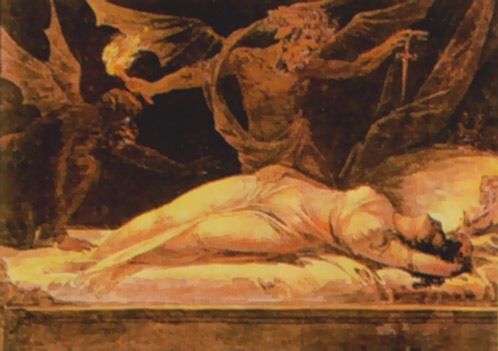
There are a number of Semitic spirits and demons some are described below however more will be described later in greater depth in later history when during the 18th century AD we will explore the hight of Occult demonology.
Dybbuk: A restless spirit said to possess people and objects, especially wine boxes. Dybbuk are said to possess corpses and release their hold on the dead once their mission is completed, they are neither good or bad but have aspects of both alignments.
Elohim: The word for the host of Gods angels or the children of El which refers to the other Canaanite Gods.
Estries: Estries are vampiric spirits able to shape-shift, they are related to Lilith and the succubi and are known to seduce and torment men as they sleep. If an Estrie is wounded it can heal itself by eating bread and salt given to it by the one who wounded her, she may use seduction to achieve this exchange. Estries are able to fly when they let their hair down and are known to have a hidden horrific face that emerges when they feed on human blood. Estries are killed in the same way as vampires - with silver, burning or decapitation and it is recommended to put soil in their mouths before burying them to prevent them from rising again.
Gello: A Gello is a demoness who causes problems in infant development and in pregnancy usually resulting in the death of the child and/or its mother, they are also known to possess people and are one of the spirits that inspired the Lilith mythology.
Lilim: The succubi offspring of the demoness Lilith, they prey on the sexuality of humans in wet dreams feeding on semen and masturbation fantasies draining the host of its lifeforce parasitically they drive men insane with lustful desires and inspire sexual evils, the Lilim also spread venereal diseases and are likely related to the earlier Sumerian Lilin.
Mazikeen: Winged elves capable of shape-shifting they are known to be tricksters who have the ability to cause problems for people.
Obizoth: A female demoness who strangles babies and is therefore related to the Lilith mythology. Obizoth is thought to kill babies through jealousy of not being able to produce her own. Obizoth is likely a Semitic version of the Sumerian Abyzou.
Piznai: An early Hebrew form of succubus.
Robes: Meaning “Croucher” is a Semitic version of the Sumerian Sulak or “Lurker” spirit.
Shedim: Evil spirits, a Hebrew word for demons.
Zar: A Zar in its true form resembles a leopard however it has the power to possess the mind of others but it only takes the minds of unmarried women. This spirit usually takes young women as its victims and causes them to stand and stare into space growling ferociously causing them to writhe terribly as they do. The Zar can be exorcised and tradditionally whipping was said to be an effective remedy. The Zar cannot be destroyed but can be forced into other vessels and was sometimes allowed to posses people already possessed by other spirits to drive out the other demonic influence in a belief in evil working against evil this worked because although Zar’s are powerful they are easy to exorcise and cause much less damage than other demons of who cause insanity, torment, pain, disease, perversions and potentially deaths.
Zophasemin: A species of intelligent creatures in the shape of spheres who observe the heavens they may be related to the Grigori “Watchers”, Ophanim or Galgalim angels or the Sumerian Igigi.
11 notes
·
View notes
Text
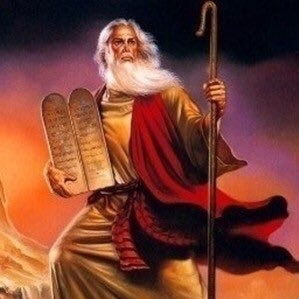
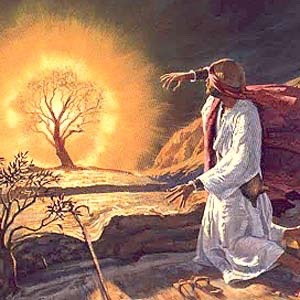
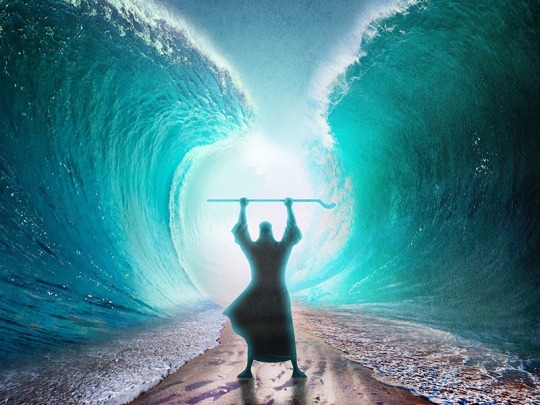
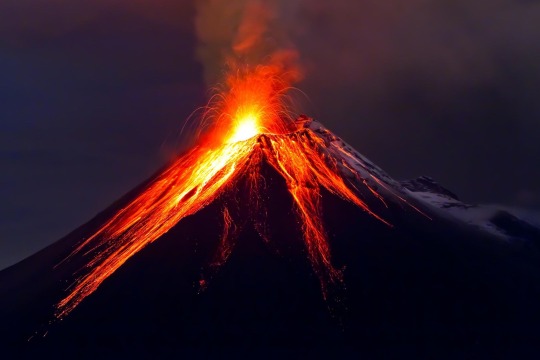
Moses: Moses was a Hebrew child born in Egypt at a time when pharoah was killing Hebrew children to keep their numbers down in fear of revolt. In order to escape this fate his mother sent him down the Nile in a wicker basket where he was discovered by the wife of the pharoah who adopted him as an Egyptian prince. Moses grew up like royalty and would have been privy to the secrets of the Egyptian Kabbalah however upon discovering his true heritage he kills an Egyptian slave driver to protect some Hebrew slaves and then escapes in exile into the desert to become a shepherd. Moses then encounters a burning bush which spoke to him claiming to be “I am that I am” and God of his Hebrew fathers, this may relate to the Kabbalistic tree of life which has Hebrew letter pathways describes as “black fire burning on white fire”, it may be a reference to hallucinogenic drugs burned and smoked to cause a vision or perceieved conversation and may have been accidentally inhaled if the tree burned with volcanic fumes from underground vents, it may also have been a miracle of God or apocryphal tale, in any case God commands Moses to tell pharoah Ramses II to release the Hebrew peoples. Moses goes before pharoah and demamds the release of the Hebrew peoples, as a show of power he transforms his staff into a cobra snake however pharoah remains unmoved when the Egyptian priests demonstrate that they can do the same. Moses by the power of God and potentially invoking the plague powers of the Qliphoth strikes Egypt with ten plagues, modern scientists agree that these were likely caused by a volcanic eruption which forced silt and clay up reddening the Nile like blood killing many fish and animals and forcing frogs out of the waters enmass, the mass of dead animals attracted scavenger animals and caused lice, gnats and flies to overbreed spreading disease to livestock and then the humans who worked with or ate them, the volcanic ash cloud caused storms, fire rain, hail and darkness which also brought locusts on the wind, the death of the Egyptian first born is then explained by the fact that the first born of Egypt were often the labourers of their household who were more susceptible to the diseases from working directly with the cattle and infected grain although Biblically the angel of death Azrael is said to have gone about Egypt claiming the souls of the Egyptian firstborn. Eventually due to the plagues pharoah initially agrees to release the slaves and Moses invokes the power of God to split the red sea making a land bridge between Egypt and the Saudi desert, this can also be an effect of volcanic eruptions which are often accompanied by earthquakes and changes to land mass, the Hebrews escape across the land bridge and the Egyptians persue them, but the Egyptian chariots arrive too late causing them to drown when the parted red sea collapsed back in on itself. The Hebrews lead by Moses became the early Israelites surviving their desert Exodus by eating the mysterious manna from heaven, they are lead to the promise land by a pillar of smoke by day and a pillar of fire by night leading them to mount Sinai which is very suggestive of a volcano, this is also interesting since when they arrive at mount Sinai moses strikes a rock which pours with water suggesting underground volcanic springs of water and porous volcanic rocks furthermore their God Yahweh was originally known to be a mountain God and it was said his voice could make mens ears bleed which the decibels of an active volcano would be capable of. Moses may have gained prophecy from inhaling psychoactive gasses from volcanic vents as the Sibyl prophetesses were also known to have done. Moses recieved the first set of ten commandments on top of mount Sinai but smashes them when he comes down to find the Israelites worshiping the golden calf in this mythology Kabbalists say the Hebrew letter that depicte the matriarchy was lost when Moses shattered the tablets.
This became known as the “Missing Letter”. Moses then went back up to the peaks of mount Sinai and recieved the ten commandments which are based on the Egyptian forty-two commandments of Ma’at. Moses is said to have communed with the Shekhinah (bride of God) who was kept within the Ark of the Covenant within the Tabbernacle all of which is highly suggestive of Kabbalistic mysteries and Hieros Gamos sacred marriage rituals. Moses eventually came to settle in the land that would become Israel. Moses may be a “Rod” or “Staff” since he was a shepherd who came to pharoah with a message from God utilising his staff to show his power, this is interesting since God shows his power by the Rod/Staff - Human prophets or the sword - angels who bare flaming swords or are known to act as swords (Samael is the sword of Asmodeus, the flaming cherubim sword outside of Eden etc) this may also relate such figures to the Hebrew letter Lamed which is an ox goad or ladder associated with Libra which is especially interesting since Moses established laws similar to those of the weighing scales of Ma’at.
#post135#religion#mysticism#kabbalah#treeoflife#god#sacredmarriage#hierosgamos#canaanites#mythology#psychedelics#israel#semitic
2 notes
·
View notes
Text
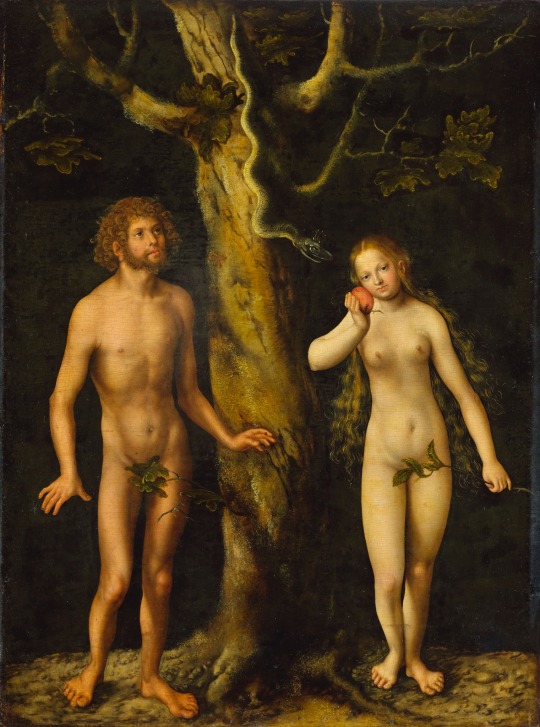
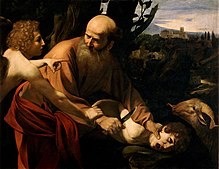

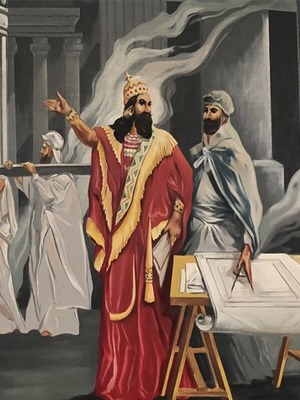

The Semites and later Hebrews had a large number of humans recorded into their mythologies and whole lists of generations can be found throughout the Old Testament in the Bible. Some notable figures are as follows:
Aaron: The Hebrew brother of Moses. Aaron became the first priest of Israel.
Abel: Abel was the son of Adam and Eve and brother of Cain. Abel was killed by his brother Cain over jealousy because God approved of Abels offering of lamb but not Cains offering of vegetation, this is said to be because Abel gave his best lamb while Cain gave only the crops he didn’t want for himself.
Abraham: Abraham (depicted top row and central) founded the Hebrew faith after being commanded by God to sacrifice his son Isaac, Abraham proved his willingness to do Gods work and so God sent an angel to hold back the hand of Abraham before he could thrust his knife into his son. God then gave Abraham a set of laws and told him he would found the nation of Israel. The site known as the “dome of the rock” in Jerusalem is the only site sacred to Jews, Christians and Muslims because it is supposedly the site where Abraham was to sacrifice Isaac meaning that it is the common root of all three of these faiths.
Adam: Adam (depicted top left) is the first man created by God according to Genesis, Adam is created from clay called Adamah in the likeness of God, in Kabbalistic tradition this is because Adam is a microcosm reflecting the macrocosmic divine being known as “Adam Kadmon”. In early Hebrew writtings Adams first wife is Lilith but she fled from him because he refused to accept their equality as both were made from the same clay so God made Eve from Adams rib to be more subserviant to his will which worked out untill the serpent in the garden of Eden convinced Eve to eat the fruit of knowledge/death causing their mortality, expulsion from Eden cursed to toil the earth for food and birth the children Cain and Abel. Adam and Eve eating the fruit of knowledge offered by the serpent is likely an ancient Semitic Kundalini mystery where the tree symbolises the Kabbalistic Tree of Life/Death as well as the human spinal cord and nervous system while the fruit represents the third eye that gives knowledge explaining why the Bible states that when they ate the fruit of knowledge their “eyes were opened”.
Aqhat: Aqhat was given a marvellous bow made by the God of smiths, Kothar in Canaanite mythology. The war Goddess Anat coveted this weapon. When Aqhat refused Anats offer of immortality in exchange for the bow she had him killed by a soldier called Yatpan. Aqhats body was then eaten by Samael. As a result darkness descended on the earth and plants and animals began to die. With the help of El, Anat rescued Aqhat from the underworld and restored the bow to its rightful owner whereupon all things returned to normal.
Balaam: Balaam was a prophet and diviner who was said to know when Gods anger was raised, Balaam sought to destroy the Israelites by temptations of the flesh and food offered to false idols which caused God to send a plague upon them.
Bazaleel: The architect of the Tabernacle and the Ark of the Covenant. Bazaleel was a priest or mason also in charge of sacred oils, incense and vestments.
Boaz: Boaz was a wealthy landowner and husband of Ruth. The name Boaz is derived from the left pillar of the temple of Solomon as opposed to the right pillar Jachin, these concepts are important in both Freemasonry and Kabbalah although Boaz as a person is of unknown connection to these concepts.
Cain: Cain is the brother of Abel and as such is often thought to be a son of Adam however some interpret the act of Eve eating the serpents/magicians fruit to be a sexual act and state that Cain is the result of this forbidden union, this is often refered to as the “Serpent Seed” mystery. In any case jealous of God looking favourably on Abels offerings and scoulding Cain for his, Cain commits the sin of murder killing his brother Abel and hiding his body, when God discovers Cains deeds he is punished by being exiled to the land of Nod but begs God for mercy saying the other peoples living in the wilderness will kill him and as such God marks Cain with a sign on his head and a form of immortality that means anyone who kills Cain will inherit a greater curse. Cain takes a wife and sires children. In Hebrew “Cain” is rendered “Qayin” which means “Spear”.
Canaan: The founder and father of the Canaanites who inherited a generational curse from Canaan who had been hexed by Noah for the actions of Canaan’s father Ham, Noah cursed Canaan as a servant of servants to serve his brothers.
Daniel: Daniel was a prophet held captive in Babylon after the Babylonians looted the temple of Jerusalem he was able to divine the meaning of the Babylonian kings dreams and to explain the meaning of miracles he observed.
Deborah: Deborah whose name means “Bee” was an Israelite prophetess who lead a rebellion when the Israelites were captive in Canaan, the Israelites crush the Canaanites in battle as she predicted and the Canaanite king Sisera escapes to the tent of Jael where Deborah lays him to rest giving him milk before driving a tent peg through his temple. This may be a Kabbalistic/Alchemical mystery since Deborahs name means bee, she gives milk inside a tent (often symbolically synonymous with the tree of life) and drives a tent peg (which is a symbol of the Hebrew letter and pathway of Vau) through his temple which may refer to his spiritual makeup rather than his physical skull.
David: David was a shepherd who became famous for his musical talents and later became a favourite of King Saul for his heroic act of slaying the Philistine giant/nephilim Goliath with a slingshot. King Saul and his son become concerned that David plans to steal the throne however when both are killed in battle David becomes King of Israel and Judah, he went of to conquer Jerusalem and seized the Arc of the Covenant, he was however denied the honour of creating the sacred temple because he commited the sin of adultery, his most notable son is his successor King Solomon. The six pointed star symbol known as the “seal of solomon” is also known as the “magen david” or “shield of david”, David is a prominent figure in Judaism and the twelve tribes of Israel are thought to connect to his bloodline, Jesus Christ was also said to be a relative of King David in later history.
Elijah and Elisha: Elijah was the father of Elisha, both sought to end the worship of the Canaanite God Ba’al. Elijah was suddenly taken up into heaven by a chariot of fire which may relate to Merkaba mysticism or an ancient account of alien abduction.
Enoch: Enoch (depicted ascending top right) was the son of Jared, father of Methuselah and grandfather of Noah. In the Biblical accounts of Genesis and the Talmud, Enoch is said to have died before his time where as in Kabbalistic texts he was said to be the first man to transcend physical existence ascending to become the highest angel “Metaton” meaning “voice of God” by forming a cube from his soul later known in sacred geometry and Kabbalistic works as Metatrons Cube or “the lily among the thorns” and the Tree of Gra. Enoch was also the reported author of ancient gospels left out of the Bible called the “Book of Enoch” which goes into greater detail about the fallen angels and Nephilim and what had inspired them to commit the sin of interbreeding with humanity.
Eve: Eve is thought to be the mother of all humanity as backed up scientifically to some extend by the existence of the Mitrochondrial Eve. Eve is possibly where we draw the word “evening” which is interesting since her early forebarer Lilith’s name means “of the night”, unlike Lilith who was made from the same Adamah clay as Adam and thus his equal who fled from him, Adams second wife Eve was made from Adams “Tsela” meaning “Rib”, “Temple Face” or “Side” and thus subservient to Adam. In the Genesis narrative Eve is seduced by the words of the serpent/magician/fallen angel and eats from the fruit of knowledge/death and convinces Adam to do the same which is a sin since she held the words of the serpent above Gods, God curses then serpent to crawl on its belly all its days eating dust and puts animosity between the serpent seed lineage and humanity saying the former will strike at mans heels and the later will crush the snakes heads under their feet. God then exiles Adam and Eve from Eden placing a Cherubim in the form of a two-bladed flaming sword at its entrance. Since Adam and Eve had eaten “Da’at”/“Daath”/“Death” they had added mortality to their spiritual makeup causing the division of their unified being into male and female who realised they were naked upon seeing eachother and constructed aprons out of figs to cover themselves, this meant that having also obtained knowledge they were no longer ignorant or their nakedness and with the implimentation of the Sephira of Hessed and Gevurah into their spiritual makeup they were able to determine between good and evil for themselves and had gained freewill able to work against the whims of God/natural order. As punishment Adam would have to toil the fields to sustain himself and Eve would experience great pain in childbirth, eventually mothering Cain and Abel. Adam and Eve eating the fruit of knowledge offered by the serpent is likely an ancient Semitic Kundalini mystery where the tree symbolises the Kabbalistic Tree of Life/Death as well as the human spinal cord and nervous system while the fruit represents the third eye that gives knowledge explaining why the Bible states that when they ate the fruit of knowledge their “eyes were opened”.
Ezekiel: Ezekiel was a prophet who had Merkaba visions of God on a throne surrounded by light in a great cloud flanked by four-headed Cherubim and Ophanim “wheels within wheels” (both types of angels). In this vision God hands Ezekiel the scroll of Lamentations which Ezekiel eats describing it as sweet like honey. Ezekiel then saw visions of a third temple prophecised to be build in the future on the mountain of Jerusalem which he describes in great detail. Some believe that Ezekiels encounter with the Merkaba of God is actually an alien encounter.
Goliath: Goliath was a Philistine (Palestinian) giant or Nephilim slain by King David via a stone launched from a slingshot.
Hiram Abiff: Hiram Abiff (depicted bottom left) was the architect of Solomons temple and the leader of an early Hebrew group of masons. Hiram Abiff was grand master of this primitive masonic lodge and along with Solomon and one other was said to know one third of the great mystery for which he was attacked one night as he fled the temple by three masonic initiates who sought these secrets threatening him at each exit with a different weapon until the last struck him dead with a club blow to his head, the three assassins then burried Hiram in a shallow grave marked with an acacia sprig. Solomon comands the masons to find Hiram Abiff and they find the grave and his attackers hiding in a cave who are all put to death since Solomon declares the secret to be lost having died with Hiram. This story is central to modern Freemasonry and is enacted by initiates to the Masonic orders who play the role of Hiram Abiff in ritual retelling being struck over the head and the raised back to life with the lionspaw handshake. Some equate Hiram Abiff with one head of the great beast that rises from the pit or ocean in revelations since this particular head is said to be bashed in as though struck with a weapon.
Jacob: Jacob was a prophet who married into the Canaanite tribe and who made a covenant with God he was later known as “Israel”. Jacobs twelve sons became the fathers of the twelve tribes of Israel. Jacob userped his brother Esau by fooling his blind father into bestowing his blessings onto Jacob instead of Esau. Jacob recieved a vision of a ladder upon which many angels ascended and descended this is often taken to be related to the Egyptian ladder of ascension Shu and the later Jewish Kabbalah in which the tree of life is often refered to as “Jacobs Ladder”.
Job: Job was a man who was seen as good in the eyes of God however Satan suggested that Job only loved God because of the great life God had afforded him and so the two made a wager on if Job would still be righteous if his blessings were stripped away, eventually after the deaths of his family, the loss of his health and his land Job turns from God cursing him, God then speaks with Job directly rebuking him for his folly and restores his health, wealth and a new family to repay his loses. In later Kabbalistic texts Moses is brought into heaven where he witnesses the angel of death Samael on route to claim the soul of Job, Samael is so ferocious that Moses prays to God a different angel will be sent to claim his own soul when he dies.
Jonah: Jonah was given a prophecy to deliver the word of God to powerful enemy nations however in fear Jonah fled and was swallowed up by a whale and only released when he agreed to do as he had been commanded. In studies of the tree of death/Qliphoth and its Qlipha the Qlipha of Gamaliel has an outer cortex called “Ogiel” which refers to the trap of those who “flee from God” just as Jonah had.
Joseph: Joseph was a Canaanite and the most beloved son of Jacob who gave him a many coloured robe, Joseph had prophetic dreams that he would become superior to his brothers however his jealous brothers sold him to Egyptian slavers ripping the robe and smearing it in blood they convinced their father that Joseph had been killed by a bull. Joseph was sold to an Egyptian guard of the pharoah whose wife tried to seduce him and then claimed he had raped her when he refused her causing him to be falsely imprisoned. In prison Joseph interpreted the dreams of the pharoahs imprisoned cup barer and baker correctly and years later pharoah had dreams that on the cup barers advice were interpreted by Joseph to mean seven years of abundance followed by seven years of famine and advised the pharoah to stock up on supplies for. Joseph was released from prison and given wife and property and appointed as an advisor of pharoah and master of the food stores, when the famine came the people of Egypt sold their land to Joseph who then implimented a tax on behalf of pharoah. Eventually Josephs brothers came to Egypt seeking food and did not recognise him though he recognised them he accused them of being spies and had them imprisoned for three days but released them when he heard them speak of the wrong they had done to their brother Joseph and so gave them free grain. The brothers returned to Canaan and then back to Egypt for more grain bringing their oldest brother Benjamin with them as Joseph had requested them to do in their last meeting, during their stay Joseph gave the brothers more grain and gold but planted his silver cup in Benjamin’s bag so that he could accuse him of stealing and force him to become his slave to pay off the crime. The other brothers protested that they should take Benjamins place and Joseph wept revealing his deception in that he was infact their brother and explained to them the story of what had happened to him after being sold into slavery in Egypt, he told the brothers to bring their father, other brothers and possessions back to Egypt to live with him and survive the rest of the famine as family together.
Lot: Lot was the nephew of Abraham and traveled with his family to the twin cities of Sodom and Gomorrah, in Sodom the people who practiced sodomy sought to rape Lot and his family however they escaped on advice of angelic messangers who spoke to them telepathically of the coming destruction of Sodom and Gomorrah they were warned not to look back less destruction fell on them which they all obeyed except Lots wife who looking back was turned to a pillar of salt. It was described as raining sulphur in Sodom and Gommorah as Seraphim had opened their wings on the cities destroying them, this account is sometimes considered to be an ancient account of nuclear weaponry as Lots wife is seemingly vapourised and Sodom and Gomorrah are seemingly inexplicably destroyed in a burning rain not disimilar to nuclear fall out, archeologists have also found sites in the deserts of the middle East where these cities might have stood finding that the skeletal remains seem to indicate sudden deaths from their positions along with fragments of fused glass which happens when the sand is exposed to sudden extreme temperatures. Lot is later made drunk and raped in his sleep by his two daughters so that they could bare children. The telepathic angels in human guise are often believed to be aliens and the use of nuclear weapons in the ancient world are seemingly hinted at by other religious texts such as the later Hindu concept of Brahmastra.
Naamah: The sister of Tubal-Cain of some interest to the Serpent Seed mysteries since in Tubal-Cain bares Cain’s name and Naamah is later equated with the demonic succubus Lilith in Hebrew demonology.
Nimrod: The Babylonian king who sought to build the tower of babel to reach God (likely an Alchemical or Kabbalistic ascension mystery surrounding the concept of a ladder of ascension). God cursed Nimrods workers confusing their language so that they could not work together and the building was abandoned.
Noah: The Hebrew version of the Sumerian Atrahasis. Noah was given the commandment by God to build an ark storing his family, seeds and two of each animal in order to spare them from the flood God was going to send to destroy the Nephilim, fallen angels and evil generations of man/serpent seed lineage.
Paqhat: The sister of Aqhat who killed Yatpan in vengeance for her dead brother.
Samson: Samson was the last of the Israelite judges who due to his mythical strength is often equated with the Sumerian Enkidu or Greek Hercules. Samson was so strong that he killed a lion with his bare hands and massacred an entier Philistine army using the jaw-bone of a donkey as a sword. Samsons weakness was that if he cut his hair he would breach his sacred vows and lose his strength this was exploited by his treacherous lover Delilah who cut his hair and gave him up to his Philistine enemies who blinded him and forced him to grind grain as a slave during which time he prayed to God and his hair began to regrow, the Philistines eventually brought him to the temple of Dagon where he pulled down the supporting column killing himself and his Philistine captors.
Sarah: Sarah is a beautiful woman described in the book of Tobit, Sarah tries to marry seven different men who are all slain by the demon Asmodeus on their wedding night because they had evil intentions causing God to allow Asmodeus to strike them down, Tobit prays to God who sends the Angel Raphael to interceed and prevent Asmodeus from attacking and so Sarah marries Tobits son and Tobit who was previously blind regains his sight. This is interesting since Asmodeus is known as the “blind God” however the story also alludes to the way in which demons, as fallen angels, are still without freewill and must therefore act under the will of God and do Gods bidding just as other angels must.
Saul: Saul was the first king of Israel and was succeeded by King David after Saul died in battle having commited suicide by falling on his own sword preventing the Philistines from capturing him. In his earlier life Saul had been anointed King by the prophet Samuel.
Solomon: King Solomon (depicted bottom right) was a son and successor of king David. Solomon was offered any gift he chose from God and chose wisdom knowing all other gifts would follow it, Solomon was said to be a great and powerful magician known to summon and bind demonic and angelic spirits to his will, with the help of Hiram Abiff and demonic forces he built the temple of Solomon in Jerusalem and with the help of local Galla tribesmen and angelic forces built the sister temples in Lalibela in Ethiopia. Solomon was said to conjour demonic spirits and then imprison them in a brass vessel in one myth one of these vessels is discovered and demons were unleashed. The magical formulas associated with Solomon are recorded in the lesser key of Solomon and the great key of Solomon, including the rites involved with the evocation and exorcism of demonic spirits, these rites call for aprons to be worn and along with their close association with the temple of Solomon may bare associations with modern Masonic rituals, during Solomons reign he was said to have had all of the Occult texts in his kingdom collected up and burried under his throne. King Solomon was said to have been married to the queen of Sheba who is sometimes equated with Lilith, the Biblical “Song of Solomon” is also a text known to deal with sacred marriage and Hieros Gamos. It is said that Solomon died during the building of his temple and that God sent the Shamir worm he had been gifted by the demon king Asmodeus to alert the demons to their freedom by tunneling through the staff that was proping up their dead master causing Solomons corpse to fall over and allowing the spirits he had conjoured to escape.
Tubal-Cain: Tubal-Cain was a metallurgist known as the “first artificer of metals” he is an important character in Freemasonry used as the third degree password and symbolised by two balls and a cane making the shape of an “f” between them. In Hebrew mythology Tubal-Cain is taught to work metals into armour and weapons by the angel of death Azrael.
Yatpan: Yatpan was a soldier. The war Goddess Anat collected him from Abelim when he was drunk and carried him to kill Aqhat who had refused to give Anat his marvellous bow. Subsequently Yatpan was himself killed by Paqhat.
#post134#canaanites#mysticism#religion#mythology#hierosgamos#sacredmarriage#god#sacredgeometry#kabbalah#treeoflife#israel#demonology#masonry#sacrifice#occult#bees#alchemy#kundalini#nuclearweapons#semitic
16 notes
·
View notes
Text



The Semites and the Hebrews who came later had a variety of different mythological animals, they are as follows:
Alitha: A beast capable of extinquishing any fire.
Alukah: Alukah means “horse leech” was a creature that fed on the blood of animals it was later identified with demons, vampires and werewolves.
Avarshina: The Canaanite/Hebrew word for Phoenix.
Bar Juchne: Also known as “Ziz” it was a collasal bird with a wingspan capable of blocking out the sun and was ruler of the air in a trinity along with Behemoth and Leviathan (depicted right). The Bar Juchne was said to cause destruction when tossing its gigantic eggs from heaven.
Behemoth: A gigantic creature and ruler of the earth in a trinity with Ziz and Leviathan (depicted right) it was said that it had a tail like a cedar causing some to depict it as a dinosaur while in later demonology it would be equated with an elephant it was said that only Behemoths own bones could harm it, it was also said to drink rivers dry.
Broxa: A bird of shape-shifter said to feed on goats milk.
Leviathan: A giant sea serpent and ruler of the seas in a trinity with Behemoth and Ziz (depicted right). At the end of the Bible God is said to feed the people on the corpse of Leviathan which was so great and terrible only God himself could capture and contain it. The word Leviathan is used as a replacement for Samael and Lilith in certain old Bible passages possibly related to the two being connected via a force called “Tanin’iver” (meaning blind dragon) since the word “Tanin” means “sea serpent”, in this text God castrates the Male Leviathan to prevent their offspring from overpopularing the world. Due to this connection with Samael and Lilith, Leviathan would appear in later works on demonology. In Kabbalistic astrology Leviathan describes a percieved emination of the star sign Pisces.
Phoenix: The Phoenician word for Phoenix. A large bird (depicted left) that gatheted up sacred incenses to make its nest every hundred or thousand years it would self-immolate being born anew from its funeral pyre thus it was a symbol of rejuvenation, resurrection and rebirth.
Re’em: The Hebrew word for Unicorn sometimes taken to mean a mythical type of ox.
Shamir: Also called “Solomons Shamir” (depicted central). The Shamir is described as a worm which has the power to disintegrate anything and may draw parallels with the Alchemical universal solvent - “Alkahest”. King Solomon is said to have used the Shamir in place of tools to build his temple and the Shamir is usually stated to have been a gift to him from the demon king Asmodeus. Moses was said to have used the Shamir to carve the priestly breast plates that contained Urim and Thummin. The Shamir was sent by God to free the demons bound to Solomons will as Solomon died proped up by his staff observing his demonic slaves efforts, not knowing their master had died they continued to labour until the Shamir came along and ate through the staff causing Solomon to fall down and the demons, realising he had died, escaped.
Tzavua: A vicious beast with 365 colours in its fur.
20 notes
·
View notes